Comments / Questions (109)
![]() Lisbeth wrote:
Lisbeth wrote:
Fårstår ikke indtagningen når man skifter til pinde nr. 4,5 efter jeg har strikket 9 cm vrangbord. Hvordan skal dette forståes?
18.10.2025 - 13:25DROPS Design answered:
Hei Lisbeth. Når du skal strikke glattstrikk over 39-41-43 (49-51 ) masker skal det samtidig felles 6-6-6 (8-8) masker jevnt fordelt. I f.eks str. 1/3 mnd kan du strikke slik: Strikk 5 masker, strikk 2 masker sammen. *Strikk 4 masker, strikk 2 masker sammen* 3 ganger *Strikk 5 masker, strikk 2 masker sammen* 2 ganger . Du har nå felt 6 masker jevnt fordelt. Bruk gjerne vår nye øke/felle kalkulator (ikonet nederst til høyre). Strikk det samme når det skal felles på den andre siden også. mvh DROPS Design
20.10.2025 - 13:38
![]() Rebecka wrote:
Rebecka wrote:
Hej! Jag stickar storlek 62/68. När jag ska börja öka innan benen har jag 100 maskor på stickorna. Efter att ha ökat 9 gånger på vardera sida av markering på vartannat varv har jag många fler maskor än 118 som det står i beskrivningen. Vad gör jag för fel? Mvh Rebecka
14.10.2025 - 20:43DROPS Design answered:
Hej Rebecka. Du ökar 1 maska på varje sida av de 3 mittersta maskorna mitt fram (maskan med markör är alltså den mittersta av dessa 3 maskor). Det blir alltså 2 ökade maskor per gång du ökar. Du gör ökningen på vartannat varv, totalt 9 gånger. 100+(9x2)=118 m. Mvh DROPS Design
15.10.2025 - 14:10
![]() Birgit wrote:
Birgit wrote:
Warum wird das Muster 1 Lieben, 1 re. Auf der einen Seite 4x wiederholt und auf der anderen Seite nur 3x ? Ist dann doch nicht gleichmäßig ……. Bitte um Rückantwort
04.10.2025 - 10:48DROPS Design answered:
Liebe Birgit, der Rundenbeginn ist an der Seite in der Mitte des Rippenmusters. Nach dem Bündchen stricken Sie am Rundenbeginn 8 M im Rippenmuster (= 4 x 1 M re/1M li), dann glatt rechts, dann 14 Maschen im Rippenmuster (= 7 x 1 M re/1 M li), wieder glatt rechts und am Ende der Runde 6 Maschen im Rippenmuster (= 3 x 1 M re/, 1 M li). Mit den Maschen vom Anfang sind das dann auch 14 Maschen im Rippenmuster. Gutes Gelingen weiterhin!
24.10.2025 - 10:59
![]() Emmanuelle wrote:
Emmanuelle wrote:
Bonjour , Merci pour votre réponse rapide. J’ai le bon nombre de mailles lorsque je commence la jambe : 58 qui se répartissent ainsi : 15 mailles de côtes , 26 mailles pour le devant et 17 mailles pour l’arriere . Je ne comprends pas ou je dois placer le marqueur qui m’indiquera ensuite ou faire les diminutions.Entre les 26 mailles avant et 17 mailles arrière ou au milieu de ces 43 mailles ?
02.10.2025 - 11:07DROPS Design answered:
Bonjour Emmanuelle, le marqueur doit être placé entre les mailles du dos et celles du devant, côté intérieur de la jambe = c'est également le milieu des tours, soit entre les 26 m du devant et les 17 m du dos. Bon tricot!
02.10.2025 - 17:18
![]() Emmanuelle wrote:
Emmanuelle wrote:
Bonjour , Quand je commence une jambe , j’ai 58 mailles dont 15 mailles de côtes mais j.ai plus de mailles pour le devant que pour l’arrière.Est-ce normal ? Je ne comprends pas ou je dois placer le marqueur ? Au milieu des 3 mailles rabattues ou au milieu des mailles totales ? Merci par avance pour votre réponse . cordialement, Emmanuelle
02.10.2025 - 06:01DROPS Design answered:
Bonjour Emmanuelle, vous devez avoir le même nombre de mailles pour chaque jambe, si vous avez bien les 122 mailles à la fin des augmentations, rabattez bien les 3 m au milieu du devant + les 3 m au milieu du dos pour avoir 58 m pour chaque jambe (58x2 + 2x3)=122. Bon tricot!
02.10.2025 - 08:53
![]() Dominika wrote:
Dominika wrote:
Dzień dobry, czy mogliby Państwo trochę dokładniej opisać jak zamykać te trzy oczka? Czy tutaj chodzi o przerobienie 4 oczek razem na prawo? Czy jakiś inny sposób? W nast. okrążeniu zamknąć 3 o. środk. na środku przodu i 3 o. na środku tyłu (lub oczko z markerem + 1 o. z każdej strony tego oczka)
01.10.2025 - 10:58DROPS Design answered:
Witaj Dominiko, zamknij te oczka tak jakbyś kończyła robótkę, zobacz video TUTAJ. Pozdrawiamy!
01.10.2025 - 14:50
![]() Fiebig wrote:
Fiebig wrote:
Diese Anleitung ist sehr unverständlich erklärt.
10.09.2025 - 14:06
![]() Trix wrote:
Trix wrote:
Danke für die kostenlosen Strickanleitungen. Ich stricke schon seit Jahrzehnten, jedoch selten nach Anleitung. Ich finde diese Anleitung sehr verwirrend. Man könnte sie einfacher und verständlicher schreiben.
28.08.2025 - 14:51
![]() Kathrine wrote:
Kathrine wrote:
Jeg strikker den mindste størelse, men der er noget jeg ikke få til at gå op i opskriften: "Der er nu 96 m på p. Sæt 1 mærke i midterste m foran og 1 mærke i midterste m bag på bukserne 47 m mellem m med mærkerne i). Fortsæt rundt i glatstrik og 15 m Rib i hver side." Jeg har 49 og 47 masker imellem og der giver 96 masker i alt - hvis der skulle være 47 masker imellem, ville det give 94 masker? Skal jeg bare fortsætte med 49 + 47 masker mellem maskemarkør?
13.08.2025 - 13:25DROPS Design answered:
Hej Kathrine. Du sätter märke i midterste m foran, teller 47 m, sätter märke i nästa m (= midterste m bag). 1+47+1+47= 96 m. Mvh DROPS Design
15.08.2025 - 08:49
![]() Connie Kristholm wrote:
Connie Kristholm wrote:
Ja tak
14.06.2025 - 15:46
DROPS Baby 20-10 |
|
 |
 |
Knitted pants in with rib for baby and children in DROPS Merino Extra Fine
DROPS Baby 20-10 |
|
|
PANTS: DECREASING TIP: Dec as follows before marker: K2 tog. Dec as follows after marker: slip 1 st as if to K, K1, psso. --------------------------------------------------------- --------------------------------------------------------- PANTS: Worked in the round on needle from waist down. Cast on 110-114-118 (130-134) sts on circular needle size 3.5 mm / US 4 with light brown mix. Work rib, K1/P1 for 8-9-9 (10-10) cm / 3⅛"-3½"-3½" (4"-4"). Change to circular needle size 4.5 mm / US 7 and work next round as follows: * K1, P1 *, repeat from *-* a total of 4 times, work stockinette st on the next 39-41-43 (49-51) sts AT THE SAME TIME dec 6-6-6 (8-8) sts evenly = 33-35-37 (41-43) sts stockinette st, * P1, K1 *, repeat from *-* a total of 7 times, P1, stockinette st on the next 41-43-45 (51-53) sts AT THE SAME TIME dec 8-8-8 (10-10) sts evenly = 33-35-37 (41-43) sts stockinette st, * P1, K1 *, repeat from *-* a total of 3 times and finish with P1. There are now 96-100-104 (112-116) sts on needle. Insert 1 marker in the middle st at front and 1 marker in the middle st at back (= 47-49-51 (55-57) sts between sts with markers). Continue in the round in stockinette st and 15 sts in rib each side. REMEMBER THE GAUGE! When piece measures 11-13-14 (16-17) cm / 4⅜"-5⅛"-5½" (6¼"-6¾") inc 1 st each side of the 3 middle sts at front - inc by picking up st from previous round and K this. Repeat the inc on every other round a total of 9-9-9 (10-10) times = 114-118-122 (132-136) sts. After all inc piece measures approx 18-20-21 (23-24) cm / 7"-8"-8¼" (9"-9½"). On next round bind off the 3 middle sts at front and the 3 middle sts at back (i.e. st with marker and 1 st each side of this st) and work each leg separately. Slip the 54-56-58 (63-65) sts for one leg on a stitch holder and the 54-56-58 (63-65) sts for the other leg on double pointed needles size 4.5 mm / US 7. LEG: Continue in stockinette st in the round with 15 sts rib on the outside of leg as before – insert a marker at beg of round = inside of leg. When leg measures 2-2-2 (3-3) cm / ¾"-¾"-¾" (1⅛"-1⅛") dec 1 st on each side of marker – SEE DECREASING TIP! Repeat the dec on every 2-3-3.5 (4-5.5) cm / ¾"-1⅛"-1¼" (1½"-2¼") a total of 5 times = 44-46-48 (53-55) sts. When leg measures 12-16-18 (22-27) cm / 4¾"-6¼"-7" (8¾"-10⅝") change to double pointed needles size 3.5 mm / US 4. Work 1 round stockinette st, AT THE SAME TIME inc 4-4-6 (5-5) sts evenly – NOTE! Do not inc on rib sts at the side = 48-50-54 (58-60) sts. Continue in rib, K1/P1 in the round on all sts (make sure rib fits rib at the side). When leg measures 18-22-25 (29-35) cm / 7"-8¾"-9¾" (11⅜"-13¾") (pants measure a total of 36-42-46 (52-59) cm / 14¼"-16½"-18" (20½"-23¼") from the waist) bind off LOOSELY with K over K and P over P. Work the other leg in the same way. ASSEMBLY: Sew opening between legs. |
|
 |
|
Have you finished this pattern?Tag your pictures with #dropspattern or submit them to the #dropsfan gallery. Do you need help with this pattern?You'll find 8 tutorial videos, a Comments/Questions area and more by visiting the pattern on garnstudio.com. © 1982-2025 DROPS Design A/S. We reserve all rights. This document, including all its sub-sections, has copyrights. Read more about what you can do with our patterns at the bottom of each pattern on our site. |
|













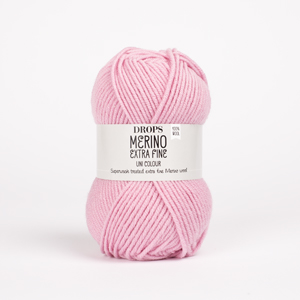
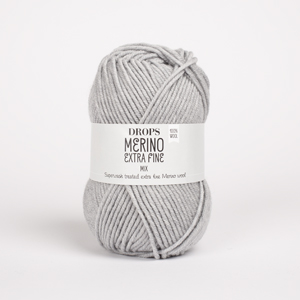

























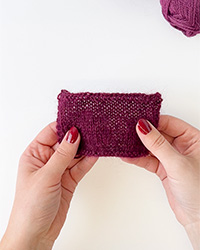

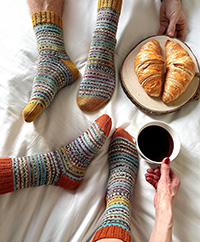
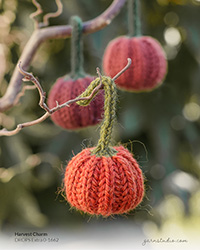
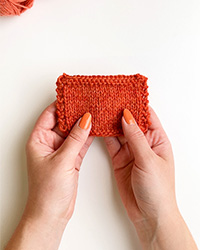
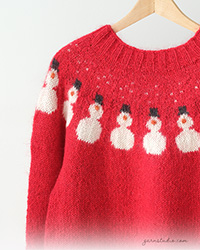
Post a comment to pattern DROPS Baby 20-10
We would love to hear what you have to say about this pattern!
If you want to leave a question, please make sure you select the correct category in the form below, to speed up the answering process. Required fields are marked *.